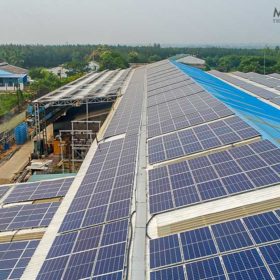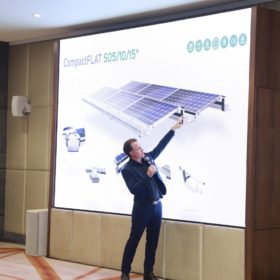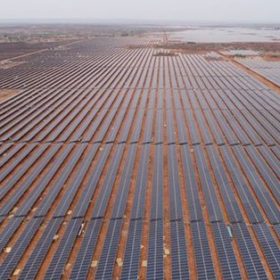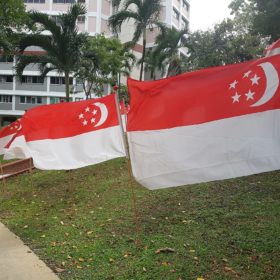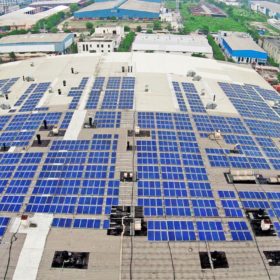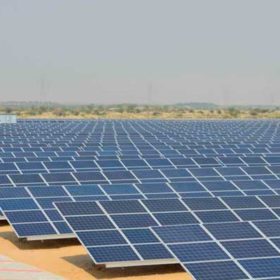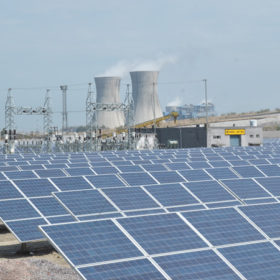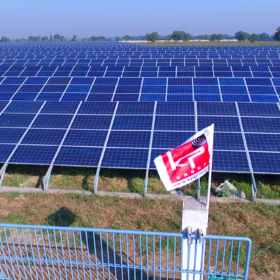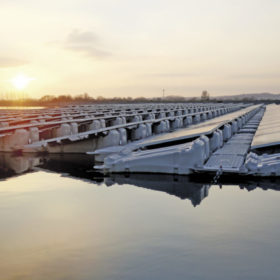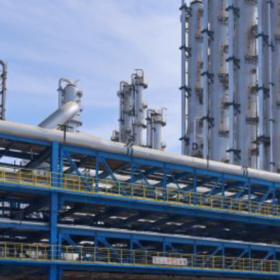U GRO Capital, Sunvest Capital to co-lend Rs 200 million to MSMEs for rooftop solar
The partnership will leverage the market intelligence of Sunvest and the tech-driven platform of U GRO in lending to MSMEs for rooftop solar.
Austrian company Aerocompact to make solar racking in India
The ‘intelligent’ racking solutions provider has joined hands with Norwegian aluminium producer Hydro Extrusion’s India arm to manufacture PV racking for rooftops. The manufacturing unit—located in Bengaluru—is eyeing at least 20 MW of business from India in the next six months.
Solar plant developers can set up excess capacity: MNRE
The requirement of design and installation of additional DC panels may emanate from the contractual need to supply the committed energy and does not cast any obligation on the procurer to buy generation in excess of the contracted energy range—stated the ministry in its advisory issued recently.
E-waste company opens battery recycling plants in Singapore and France
TES issued a press release announcing the new facilities that is light on detail but claimed the plants would position it as ‘a leader’ in battery recycling. The company also announced an intent to move into the reuse of spent electric vehicle batteries in commercial and residential applications.
Azure Power to raise US $75 million equity from Canadian investor CDPQ
The investment will increase Caisse de dépôt et placement du Québec’s equity stake in the NYSE-listed solar developer to 49.4% from current 41.4%.
Gujarat solar capacity just shy of 2.7 GW
The state this week raised its clean energy ambition to 30 GW of generation capacity within three years as figures showed ground-mounted solar is expanding at a faster rate than rooftop installations.
Haryana retenders 57 MW grid-connected solar capacity
Haryana Power Generation Corporation Limited has retendered ground-mounted solar capacity of 57 MW with relaxation in eligibility criteria. The projects—to be set up on build, operate and transfer basis—shall come up at three sites in the state and will be awarded through international competitive bidding. Bidding closes on November 25.
Uttar Pradesh cabinet approves tariffs for 72 MW solar projects
The power produced by NTPC (40 MW) and Sukhbir Agro Energy (32 MW) will be purchased by Uttar Pradesh Power Corporation Limited at tariffs of Rs 3.02/KWh and Rs 3.05/KWh, respectively, for a period of 25 years.
Siemens to impart skills in renewable energy and e-mobility
The ‘Skills for Sustainable Growth’ project will be implemented by Siemens in partnership with India’s Ministry of Skill Development and Entrepreneurship and German development agency GIZ.
Uttar Pradesh to tap state water bodies for solar power
Jal Shakti minister Mahendra Singh wants to achieve a win-win by wiping out his department’s Rs3,000 crore electricity bill and selling clean energy to the Ministry of Power. His solution involves ambitious plans for floating PV in Uttar Pradesh.
